
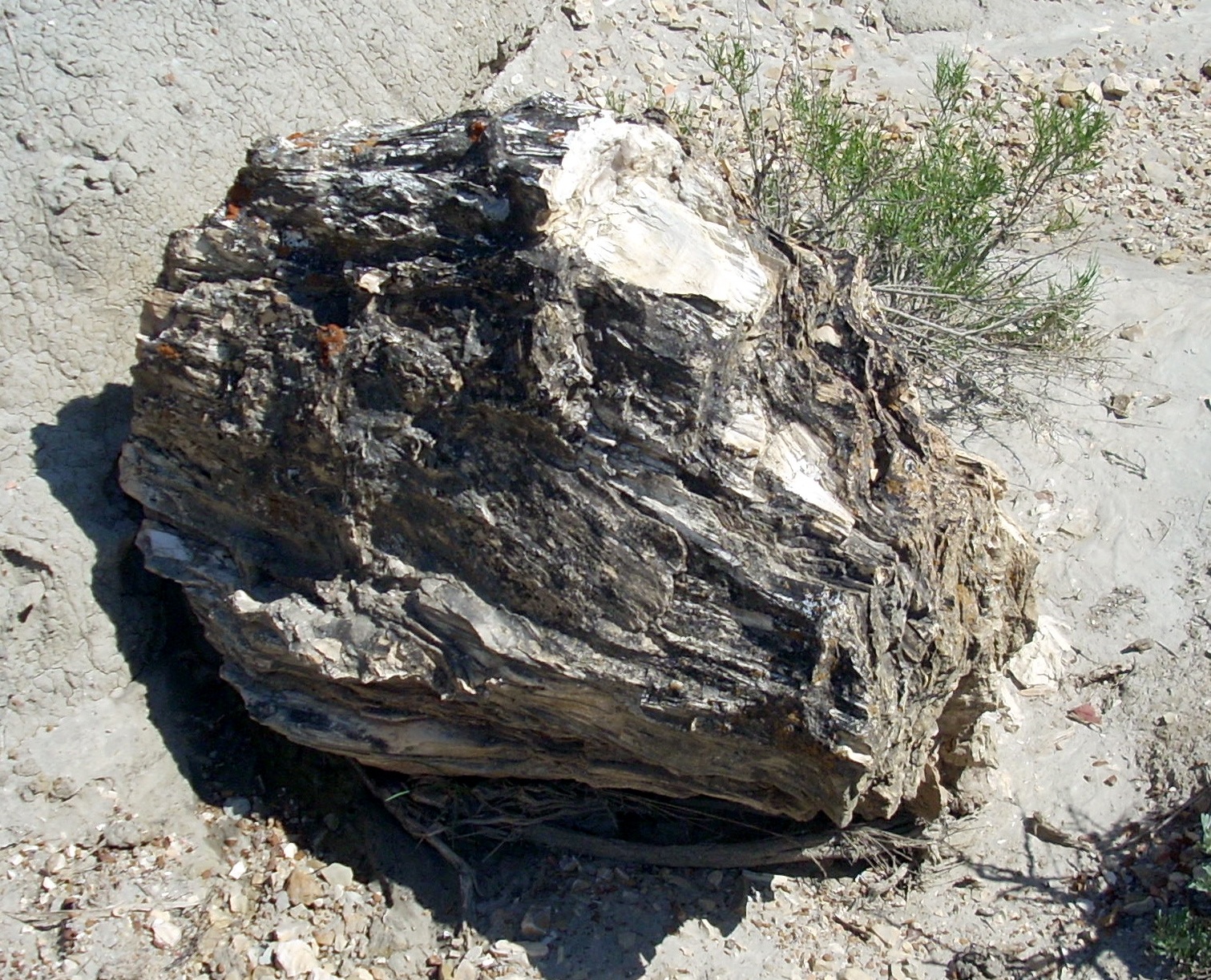
| Route 66 | Cities | Beaches |
 |
 |
The Talkington Trail is the other half of the loop with Paddock Creek. Talkington is best hiked as a long day trip. Go east from Medora on I-94 until you come to the end of the park, and take Exit 36. Follow County Road 735 north to the Redmond Farm, where a trailhead lets you take a quarter mile spur trail down to the Talkington Trail. Paddock Creek Trail comes in from your left. You can have a shuttle meet you at the road just above Peaceful Valley Ranch. Or you could hike to the scenic loop road and return, then the following day use the Peaceful Valley Ranch trailhead and hike up to the scenic loop road. The last leg of the trail, connecting Peaceful Valley with Talkington, is the Jones Creek Trail. Talkington is in some ways more scenic but also more rugged than Paddock Creek. It does not follow a creek valley all the way. Instead, it keeps climbing over ridges, buttes and mesas from one creek valley to the next. But as you can see from these photos, the rises are not long or steep. |
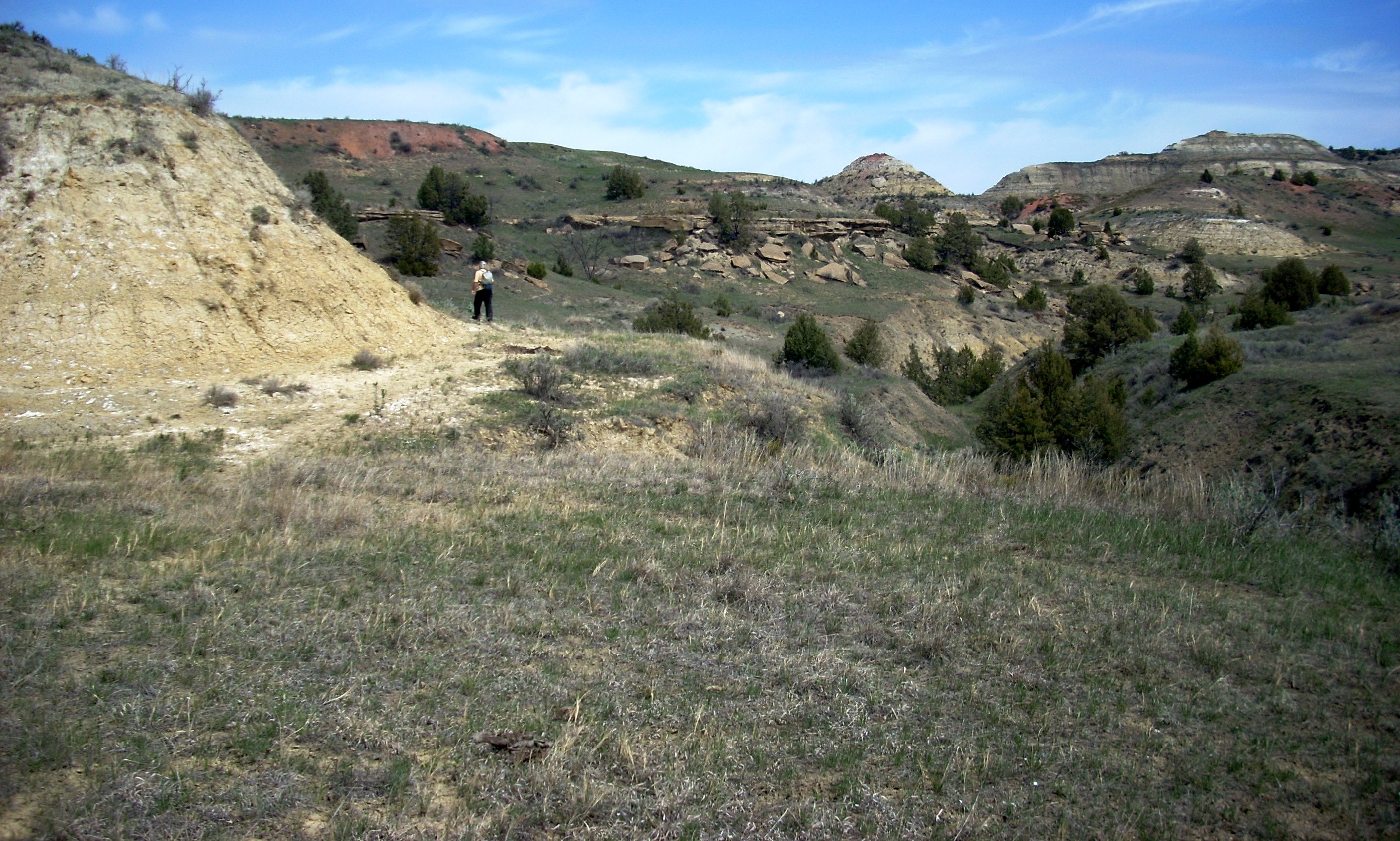 |
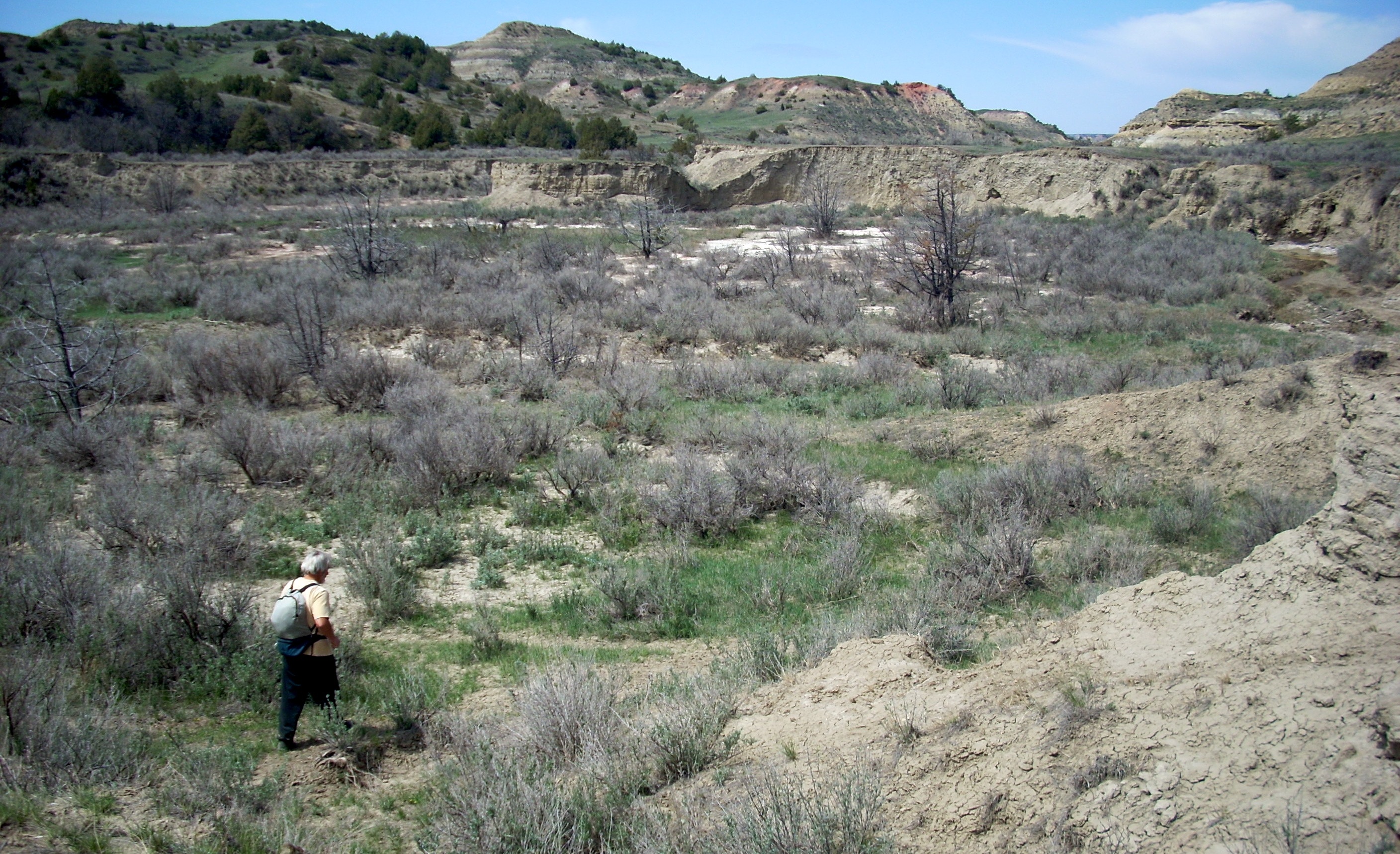 |
The highlight of the Talkington hike is the prairie dog village at its far southeastern end. If you drive the scenic road and hike Paddock Creek, this is the sixth village you've seen. But it's the biggest and longest existing, the one animal behaviorists have studied the most. A prairie dog burrow is not just a hole in the ground. They have rooms, all laid out the same way. One is for sleeping, one a bathroom, one for relaxing, and one for eating and food storage. As you approach the village, hiking along the trail, you'll hear the sentries with their high pitched "Chit!, Chit!" warning cries, and others relaying the cry across the meadow. On the Talkington Trail you will probably see fewer buffalo and wild horses but more antelope, mule deer and elk. You have fewer stream crossings and fewer stretches of mud. You have a much better chance of seeing snakes and horned toads. |
This is Scoria, a type of rock made by the scorching fires of burning coal seams. These odd loooking lumps lay everywhere along the Paddock Creek and Talkington trails. They are formed as the coal seam ignited by lightning slowly smolders and superheats the rock layers immediately above it, causing the iron deposits to melt and ooze down into the rock below. When the coal seam has burned away, the hill collapses, and these chunks tumble down. Some of these have an odd attractiveness and people in western Dakota use them for yard decorations, door stops, and property markers. But they have no practical use. The iron is enough to give it a red hue, but is of a very low concentration. Inside the park, the Scoria chunks function mainly as home to lichen colonies, which you can see all over this one. The grass you'll see on these hillsides is Dakota Bluestem, native to this area. It is a short grass, and you might wonder how a three thousand pound buffalo or one of the magnificent stallions can eat enough of this grass each day to support their metabolism. The secret is this grass has three times the protein content as grasses elsewhere in the nation, and even in Winter, when the grass goes dormant and turns brown, it does not lose its protein content. So what looks like "scrub grass" is actually the best grass in the world.
|
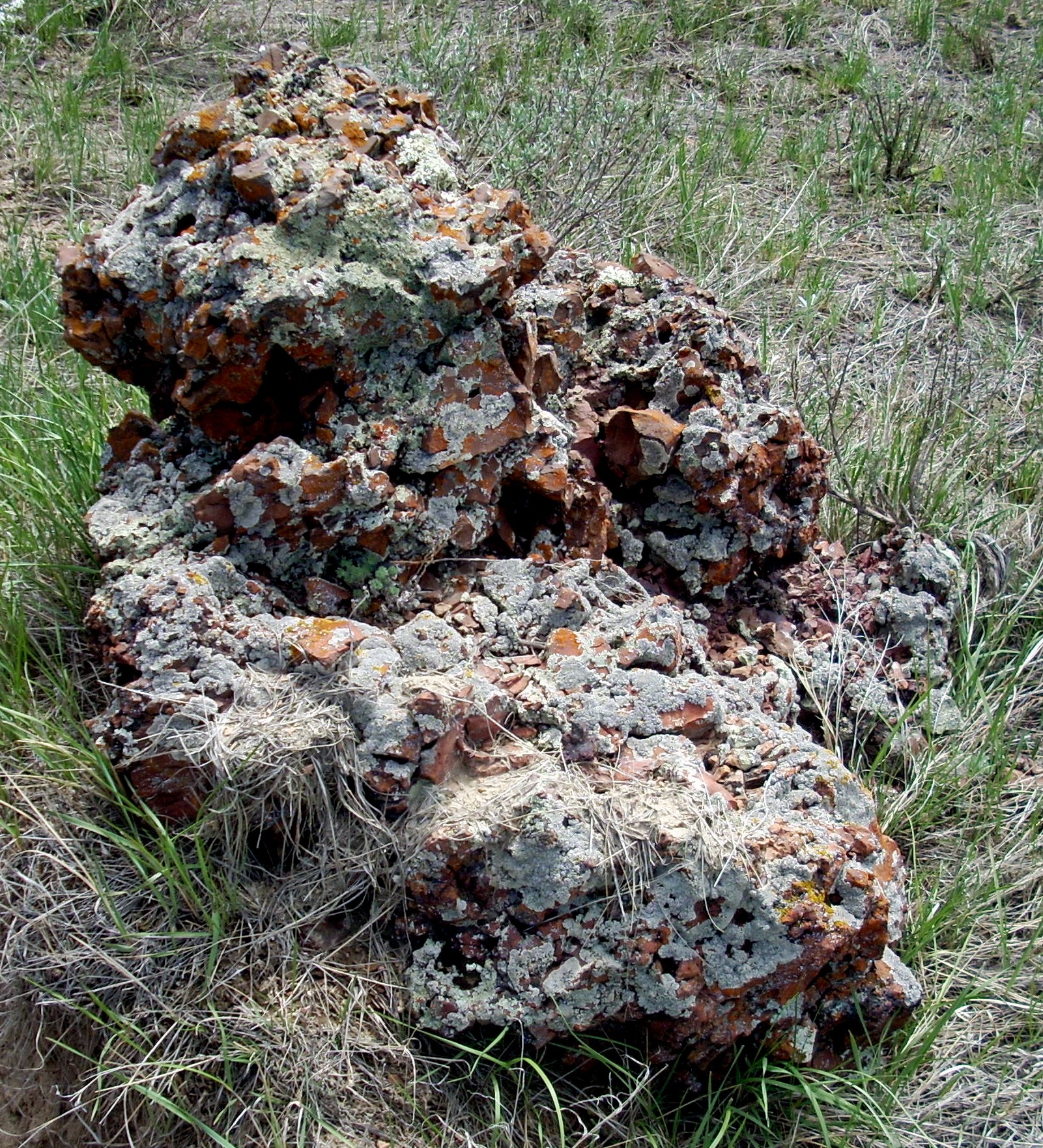 |
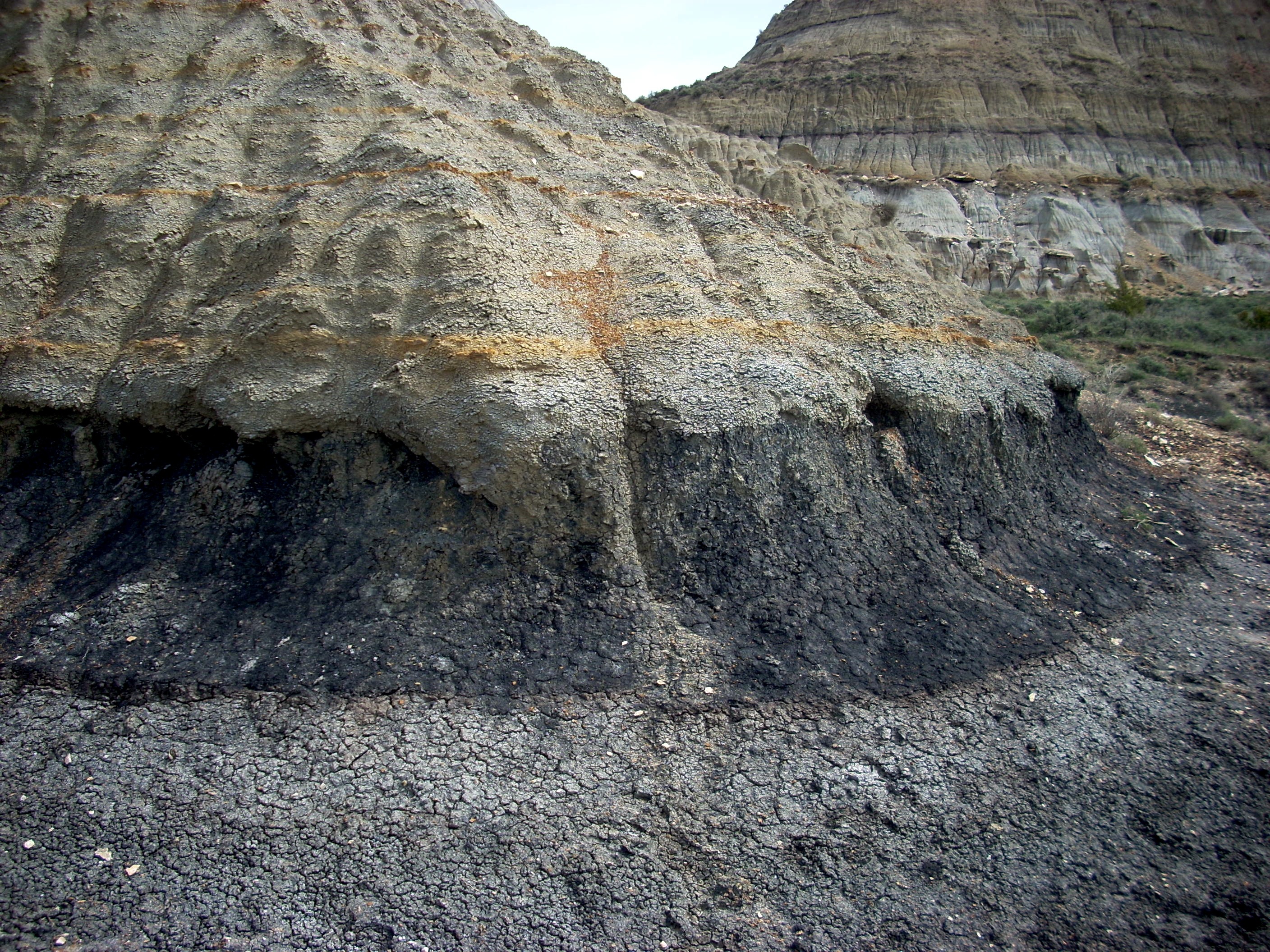 |
This is a charred coal seam. The coal seams run right along the surface, and occasionally are ignited by lightning strikes. They may smolder for a week, year, or decade, winding their way along the landscape until the seam runs out. You will pass many places where a fire has eaten out a coal seam, undermining the rock, until the hill above it collapsed, a process called Slumping. One seam smoldered for 35 years.
Every time you stop for a break, and after you get off the trail, it is critically important that you inspect yourself and each other for ticks. The ticks ride on the deer, antelope, elk, buffalo and horses, then drop off on the sagebrush and juniper branches to wait for their next ride, which might very well be you. While we were in the park, we averaged two to three ticks per person per day. They're no big problem as long as you check for them and remove them, but left alone for 24 hours theyll find their way to your hairy areas, especially underarms, and attach. Then they can be a very big problem. |
|
|||
|